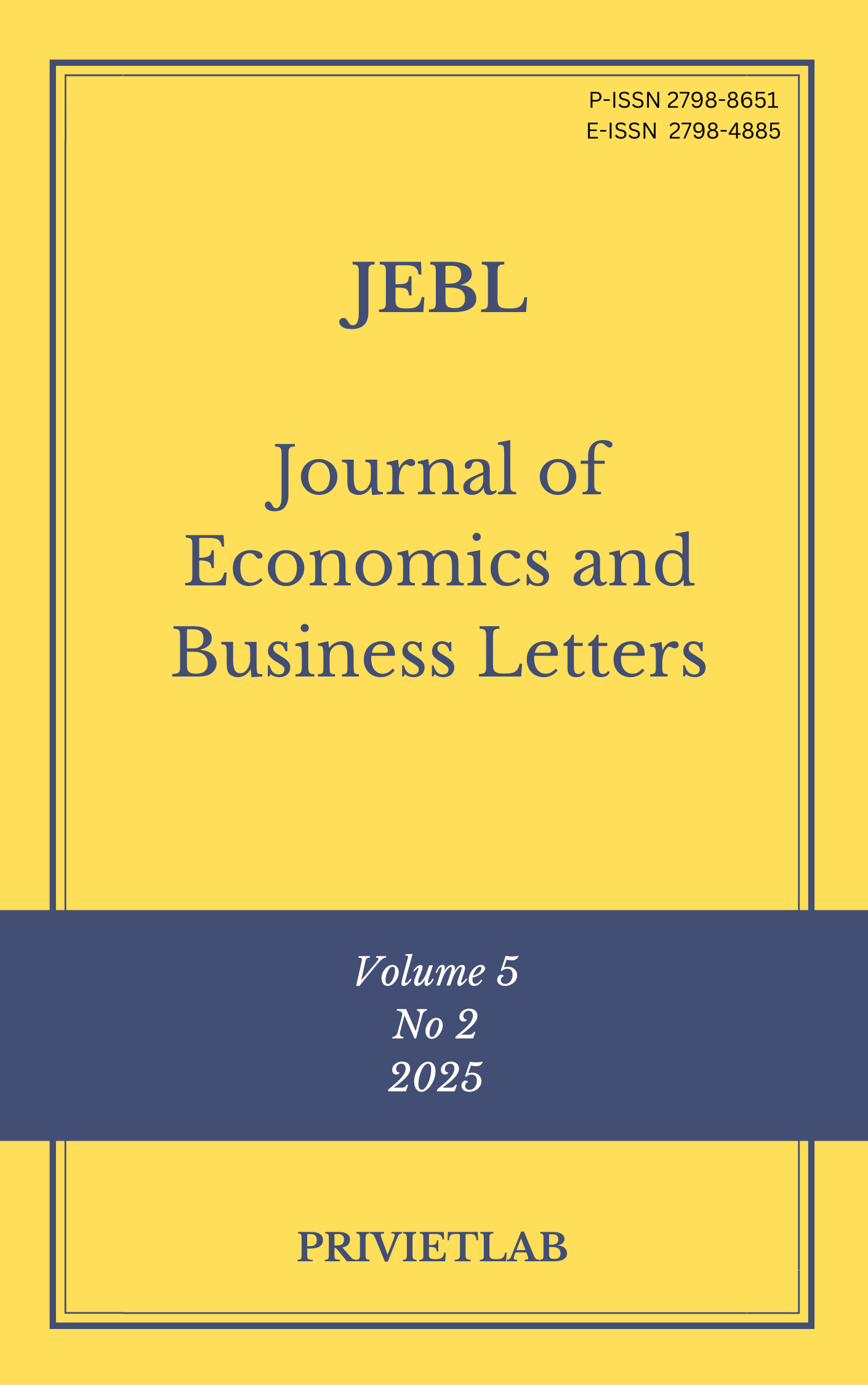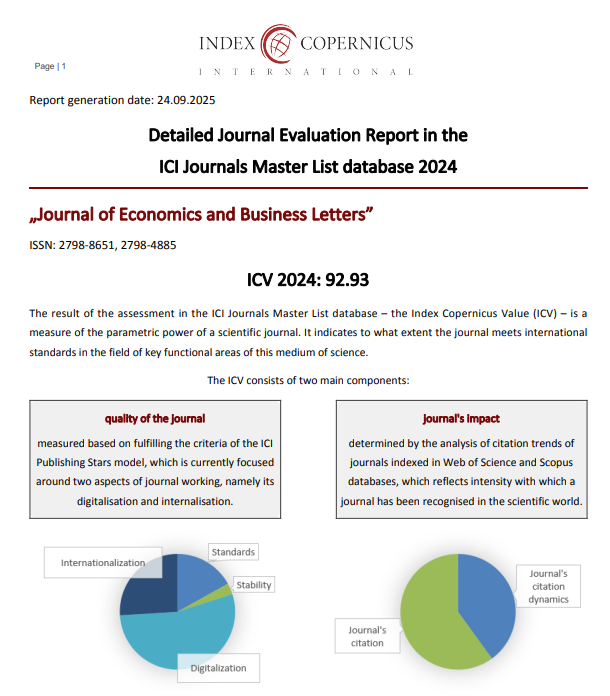Leadership, organizational culture, and education–training as joint drivers of lecturer–staff performance: Evidence from a nonprofit higher-education institution in Indonesia
DOI:
https://doi.org/10.55942/jebl.v5i2.872Keywords:
leadership, organizational culture, education and training, employee performance, higher educationAbstract
This study examines how leadership, organizational culture, and education–training jointly shape lecturer–staff performance in a nonprofit Indonesian higher-education institution (STIMA KOSGORO). Using a cross-sectional census of all personnel (N = 60; permanent and non-permanent lecturers and staff), we administered context-tailored Likert scales with strong psychometrics (α: leadership .956; culture .947; training .950; performance .931). Assumption checks supported parametric inference. Simple regressions showed that leadership (r = .698; R² = .488), organizational culture (r = .579; R² = .335), and education–training (r = .679; R² = .460) each significantly predicted performance (p < .05). In the multiple regression, all predictors remained significant and together explained 68% of performance variance (R = .825; R² = .680; leadership t = 3.444; culture t = 3.388; training t = 4.487). Substantively, leadership behaviors that clarify roles, coach, and ensure fair consequences produce the steepest returns; culture converts those behaviors into stable routines when rewards align with the outcomes the institution values; and training yields measurable gains when post-training transfer is enforced. We recommend codifying standards and reward rules, institutionalizing leader routines (weekly 1:1s, fast feedback, monthly SOP stand-ups), and tying every training to a 30-day application project to lock in capability gains. These actions are expected to raise performance while preserving fairness and morale in resource-constrained academic settings. Findings extend SHRM and culture–performance evidence to a nonprofit HEI context and offer a pragmatic roadmap for execution.
References
Arthur, W., Bennett, W., Edens, P. S., & Bell, S. T. (2003). Effectiveness of training in organizations: A meta-analysis of design and evaluation features. Journal of Applied Psychology, 88(2), 234–245. https://doi.org/10.1037/0021-9010.88.2.234
Bryman, A. (2007). Effective leadership in higher education: A literature review. Studies in Higher Education, 32(6), 693–710. https://doi.org/10.1080/03075070701685114
Bush, T. (2007). Educational leadership and management: Theory, policy, and practice. Educational Management Administration & Leadership, 35(1), 7–26. https://doi.org/10.1177/1741143207078186
Combs, J., Liu, Y., Hall, A., & Ketchen, D. (2006). How much do high-performance work practices matter? A meta-analysis of their effects on organizational performance. Personnel Psychology, 59(3), 501–528. https://doi.org/10.1111/j.1744-6570.2006.00045.x
DeNisi, A. S., & Murphy, K. R. (2017). Performance appraisal and performance management: 100 years of progress? Annual Review of Organizational Psychology and Organizational Behavior, 4, 233–259. https://doi.org/10.1146/annurev-orgpsych-032516-113240
Denison, D. R., & Mishra, A. K. (1995). Toward a theory of organizational culture and effectiveness. Organization Science, 6(2), 204–223. https://doi.org/10.1287/orsc.6.2.204
Gagné, M., & Deci, E. L. (2005). Self-determination theory and work motivation. Journal of Organizational Behavior, 26(4), 331–362. https://doi.org/10.1002/job.322
Hartnell, C. A., Ou, A. Y., & Kinicki, A. (2011). Organizational culture and organizational effectiveness: A meta-analytic investigation of the competing values framework’s theoretical suppositions. Journal of Applied Psychology, 96(4), 677–694. https://doi.org/10.1037/a0021987
Huselid, M. A. (1995). The impact of human resource management practices on turnover, productivity, and corporate financial performance. Academy of Management Journal, 38(3), 635–672
Judge, T. A., & Piccolo, R. F. (2004). Transformational and transactional leadership: A meta-analytic test of their relative validity. Journal of Applied Psychology, 89(5), 755–768. https://psycnet.apa.org/doi/10.1037/0021-9010.89.5.755
Podsakoff, P. M., MacKenzie, S. B., Lee, J.-Y., & Podsakoff, N. P. (2003). Common method biases in behavioral research: A critical review of the literature and recommended remedies. Journal of Applied Psychology, 88(5), 879–903. https://doi.org/10.1037/0021-9010.88.5.879
Tavakol, M., & Dennick, R. (2011). Making sense of Cronbach’s alpha. International Journal of Medical Education, 2, 53–55. https://doi.org/10.5116/ijme.4dfb.8dfd
Tharenou, P., Saks, A. M., & Moore, C. (2007). A review and critique of research on training and organizational-level outcomes. Human Resource Management Review, 17(3), 251–273. https://doi.org/10.1016/j.hrmr.2007.07.003
Downloads
Published
How to Cite
Issue
Section
License
Copyright (c) 2025 Kamarul Zaman Rambe

This work is licensed under a Creative Commons Attribution 4.0 International License.
















